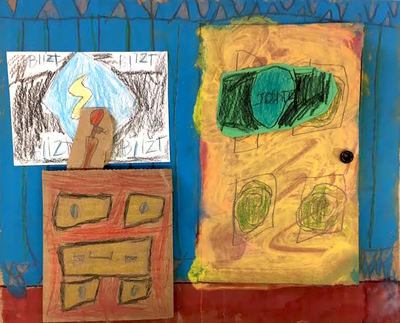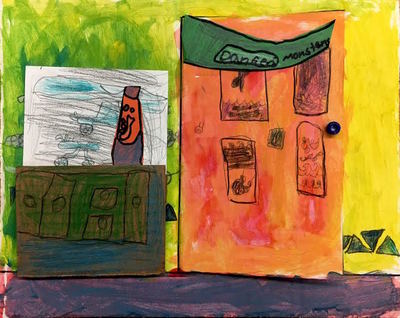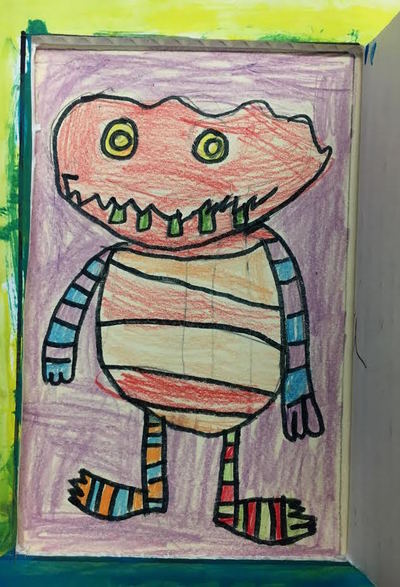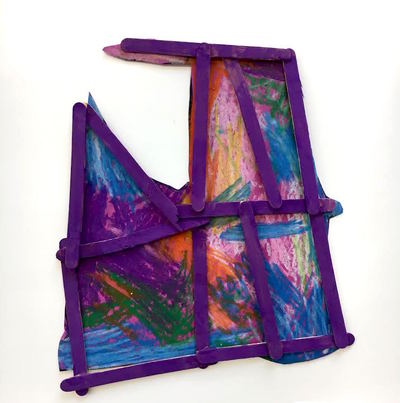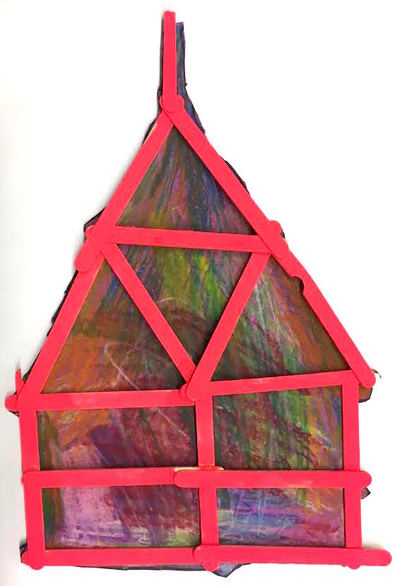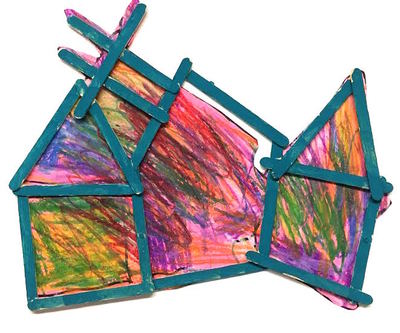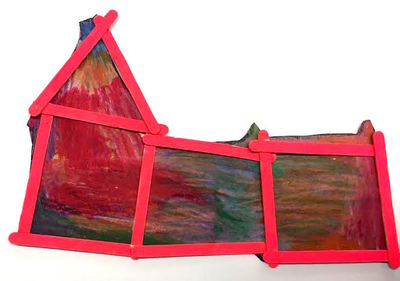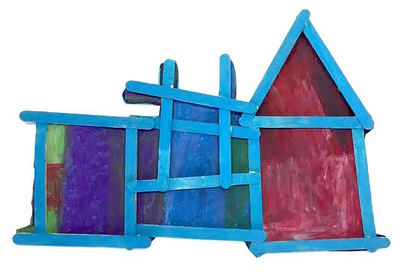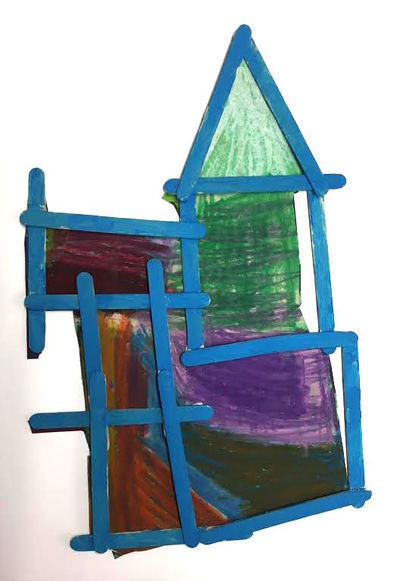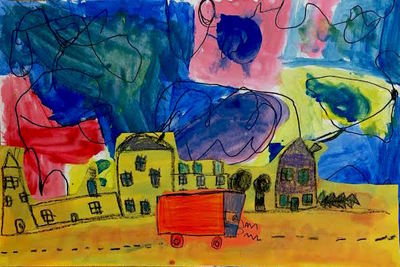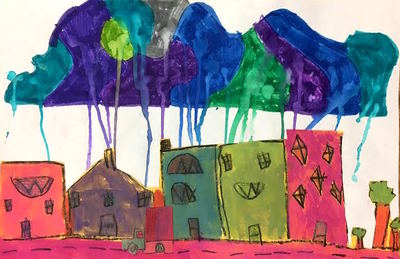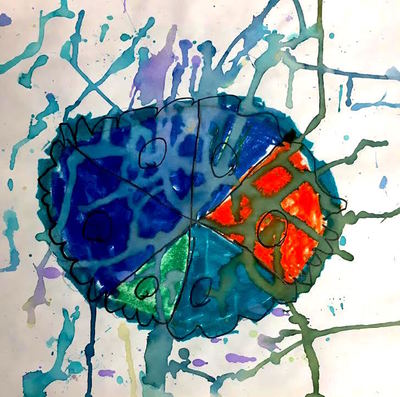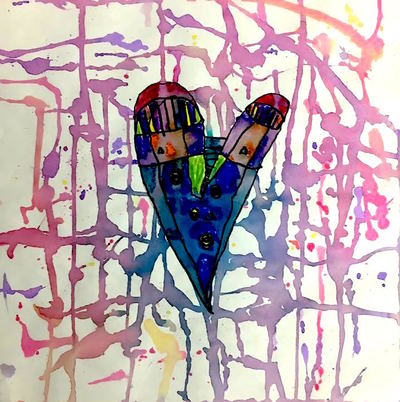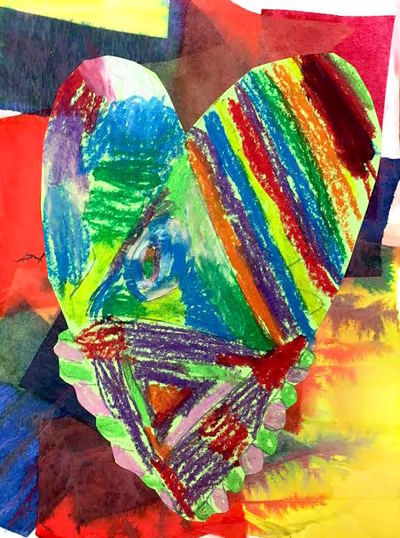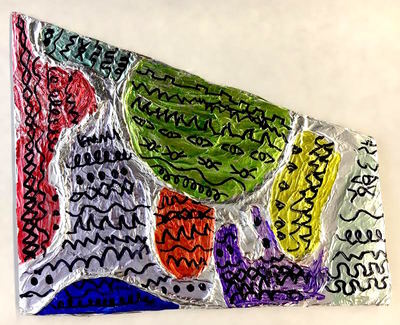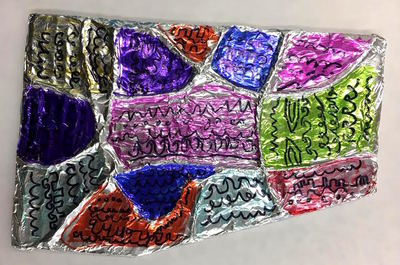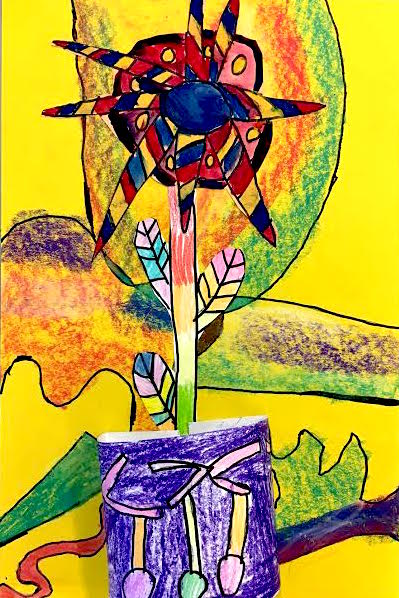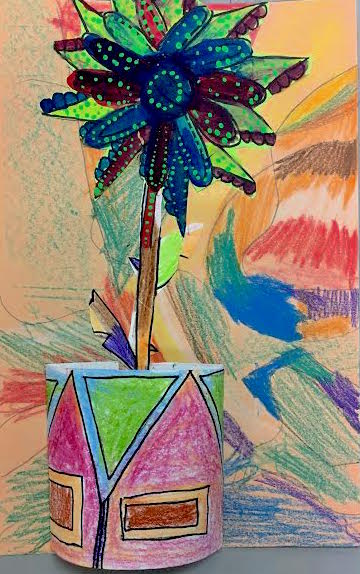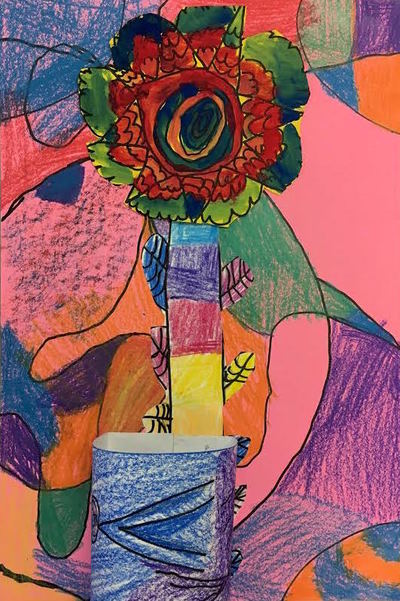|
For this unit I read Mercer Mayer's There's a Nightmare in My Closet. Students began by inventing a nightmare all whilst remembering solid color, originality and filling the space. The next step students received a cardboard room with a pre-drawn closet door, rug and floor that they used primary colored paints to color in. Students then had to decorate their room with design, color in with colored pencil and invent a poster that also was colored with colored pencil. The final steps were learned how to create a pop-up dresser using a stacking method, creating a cardboard lamp, toys, banner for their door, pasting their monsters' behind the door and finally a bead for the doorknob.
0 Comments
Introducing the meaning of an Architect and what that job entails students were challenged to become architects and the builders of their own designed building. Using popsicle sticks and very controlled amounts of glue students created bases for their structures and other elements such as roofs, windows and doorways. Allowing a week to pass to dry students then used one color per class to paint their structures, outline their buildings and use past techniques of oil pastels to color in their traced buildings. The final step students cut out their tracings and pasted their structures upon them to construct abstract buildings.
For this project students created three parts; a background, middle ground and foreground. Some classes created painted shape backgrounds while others used marker to build an ominous anvil cloud then used eye droppers and water to be masters of their own storms. For the middle ground students discussed what it means to look at buildings instead of down at them (perspective), then drew simple street scenes that they watercolored. The final day was for the foreground, or what's the closest aspect to the viewer. Students cut out their streets and drew vehicles to color and paste within their scene.
For this art party students earned with good behavior they learned how water affects washable markers. After creating a solidly colored design students used eye droppers to drip water and learned how to control the direction of the water.
The first step to this project was creating colored tissue paper backgrounds painted on with glue. Only red, yellow and blue tissue paper was used to get their secondary colors to appear. The next class students learned how to create a heart that included design, line design, detail and shapes. Using glue as a drawing tool students had fun outlining their heart designs while getting control over a heavy glue bottle. When the glue dried students learned about the artist Jim Dine and had the opportunity to view a slideshow of his work while discussing what colors and textures he used. Using oil pastels, students colored their entire design making sure to blend and experiment with their colors. This project tied in art elements; line, color, shapes and texture.
For this project students learned about relief sculpture..."to give the impression that the sculpted material has been raised above the background plane." They received different shaped pieces of cardboard and drew line designs that gave the impression of movement.
For this in-depth unit I introduced the concept of a flower filled with art vocabulary such as; design, line design, concentric circles, shapes, detail etc. Students at this point in the year must use art vocabulary to describe their work. Using their primary colors they painted their designed flowers then used toothpicks to create neon colored dots to highlight certain areas. The background of the flower and stem is a compilation of organic and geometric shapes that have been cropped and colored in using solid coloring and rubbing techniques. The final step was to create a patterned flower pot and fold it to build a 3D "Pop Up" pot.
|
Shea BrookHello, thank you for visiting my blog! I'm so excited to share my teaching journey and display lessons with artists, fellow art educators and parents of the students I'm so honored to teach. Archives
May 2024
Categories |














